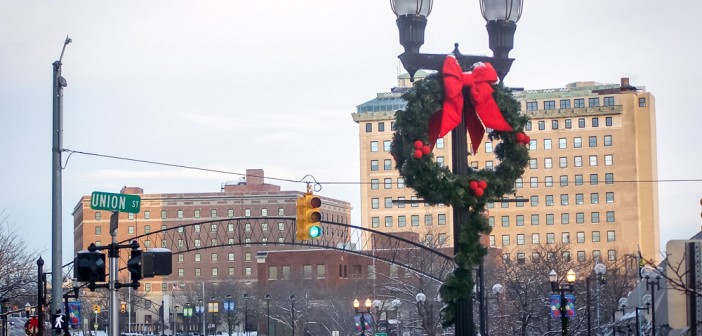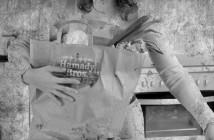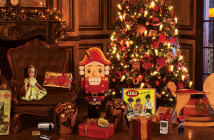How was Christmas celebrated in Downtown Flint back in the day? What was it like around town for citizens many decades ago? In this season for nostalgia, MCM takes a look back at Christmases past.
1932
Christmas Day in Downtown Flint was hailed in the traditional gala manner. Stores displayed their holiday wares prominently, because the previous year, many merchants experienced a thoroughly unexpected rush of trade that practically stripped their shelves. Saginaw Street was decked with holiday decorations and festive ornaments.
1937
On Christmas Eve in 1937, the Story of Nativity was told in many of the Flint City churches, as Flint continued its religious observance of Christmas. Many of them held midnight services, Christmas programs and pageants.
The Genesee Valley Commandery Knights Templar held its annual Christmas service at the Masonic Temple.
About 1,200 children swarmed into the Capitol Theatre for the annual Christmas show, which was a gift from the theatre. The longest feature on the program was the Shirley Temple film, Bright Eyes. On their way out of the theatre, the kids received candy and an orange from the Old Newsboys.
1939
On Christmas Day that year, Downtown Flint gleamed with Christmas lights and decorations – the whole city lit up for people to enjoy. Electricity had worked its wonder, and the lights were sparkling with magical spots of twinkling color. It was thought that decorations helped to foster the unselfish spirit of Christmas celebration.
1940
That year, holiday decorations in Downtown were in place by Thanksgiving, with an exciting new feature: a 40-foot figure of Santa that was erected in the triangular park in front of the Hotel Durant. Bearing a Christmas greeting, the figure was outlined entirely in neon lights.
Downtown Flint’s Christmas Parade was designed to warm the hearts of grownups and kids, alike. Along with bands, two floats, horseback riders and other holiday features, there were more than 200 people decked out in whimsical costumes.
1942
Falling just 18 days after the attack on Pearl Harbor, that Christmas Day was reportedly “the bluest America has faced in its entire history.” World War II Yuletide found thousands of Flint sons, and some Flint daughters, in the armed forces, fighting or preparing to fight, for the things Christmas represents. This was the only holiday on which the government permitted war plant workers to be idle.
The Industrial Mutual Association provided gifts for every aviation and ordnance soldier taking courses in Flint. In all, 26 IMA trustees wrapped 886 Christmas packages. During the gift presentation, there was an orchestra and vaudeville acts. There was no dancing, however, as the soldiers’ cots took up too much space on the IMA Auditorium floor.
1947
On that Christmas Day in Flint, as with most peacetime observances, the day was marked with good cheer, the exchange of gifts as tokens of friendship and love, and the revival of the tradition of Santa Claus. It was also a day for charity; the Old Newsboys and many volunteers brought Christmas to more than 5,000 boys and girls with packages of toys, food and clothing. The Salvation Army, churches, and other organizations delivered Christmas baskets to hundreds of needy families.
Thousands of Flint’s devout attended church services to hear “the greatest story ever told.” But for many, the memories of war became even more significant to those families whose husbands, sons and brothers would never sit with them again at the Christmas feast.
1951
The Downtown decorations for that Christmas were considered the most elegant the city had seen in many years. About 50 evergreen ropes with lights stretched across Saginaw Street from light poles between Third Street and First Avenue. Christmas trees in red boxes decked each pole. Lighted stars and wreaths hung over the middle of the streets. Topping all the decorations was a five-foot lighted star at Kearsley and Saginaw streets. Suspended 60-feet high from two corner buildings, it was visible for a great distance.
Source: Sloan Museum Archives
IgorAleks / Shutterstock.com
bookzaa / Shutterstock.com














